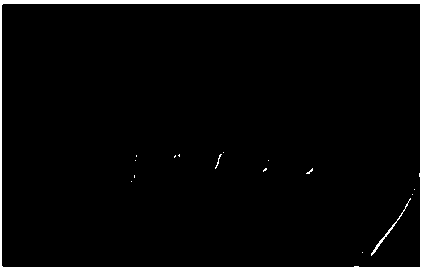Bone cartilage repair material and preparation method of scaffold for tissue engineering
A tissue engineering scaffold and repair material technology, applied in the field of regenerative medicine and biomaterials, can solve the problems of unestablished osteochondral regeneration strategy and the complexity of osteochondral tissue, and achieve the effect of promoting osteogenic differentiation and simple preparation
- Summary
- Abstract
- Description
- Claims
- Application Information
AI Technical Summary
Problems solved by technology
Method used
Image
Examples
Embodiment 1
[0042] An osteochondral repair material, the material includes a subchondral bone layer, an interface layer and a cartilage layer arranged in sequence, the interface layer is located between the subchondral bone layer and the cartilage layer, and the material includes the following components in parts by weight : 10 parts of oil-soluble polymer material, 10 parts of bioceramic powder, 50 parts of oil solvent, 0.1 part of water-soluble bioactive material, 2 parts of water, 0.2 part of emulsifier, 10 parts of hydrogel material, 1 part of seed cell and 50 copies of culture medium;
[0043] The oil-soluble polymer material used in the subchondral bone layer is racemic polylactic acid PDLLA; the oil-soluble polymer material used in the cartilage layer is a heat-responsive shape-memory polymer, and the heat-responsive shape-memory polymer is specifically polylactic acid-Sanya Methyl carbonate PLA-PTMC, where LA:TMC is 60:40-80:20. The oily solvent is specifically dichloromethane; t...
Embodiment 2
[0054] An osteochondral repair material, the material includes a subchondral bone layer, an interface layer and a cartilage layer arranged in sequence, the interface layer is located between the subchondral bone layer and the cartilage layer, and the material includes the following components in parts by weight : 25 parts of oil-soluble polymer material, 30 parts of bioceramic powder, 80 parts of oil solvent, 0.6 part of water-soluble bioactive material, 20 parts of water, 0.6 part of emulsifier, 20 parts of hydrogel material, 6 parts of seed cells and 70 copies of culture medium;
[0055] The oil-soluble polymer material used in the subchondral bone layer is lactic acid-glycolic acid copolymer PLGA; the oil-soluble polymer material used in the cartilage layer is a heat-responsive shape-memory polymer, and the heat-responsive shape-memory polymer is specifically polyethylene glycol Lactone PCL. The oily solvent is dichloromethane; the bioceramic is beta-tricalcium phosphate; ...
Embodiment 3
[0066] An osteochondral repair material, the material includes a subchondral bone layer, an interface layer and a cartilage layer arranged in sequence, the interface layer is located between the subchondral bone layer and the cartilage layer, and the material includes the following components in parts by weight : 40 parts of oil-soluble polymer material, 50 parts of bioceramic powder, 100 parts of oily solvent, 1 part of water-soluble bioactive material, 30 parts of water, 1 part of emulsifier, 30 parts of hydrogel material, 10 parts of seed cells and 100 copies of culture medium.
[0067] The oil-soluble polymer material used in the subchondral bone layer is poly-β-hydroxybutyric acid (PHB); the oil-soluble polymer material used in the cartilage layer is a heat-responsive shape-memory polymer, and the heat-responsive shape-memory polymer specifically It is polylactic acid-trimethylene carbonate PLA-PTMC, wherein the ratio of LA:TMC is 80:20~95:5. The oily solvent is specific...
PUM
| Property | Measurement | Unit |
|---|---|---|
| porosity | aaaaa | aaaaa |
Abstract
Description
Claims
Application Information
 Login to View More
Login to View More - R&D
- Intellectual Property
- Life Sciences
- Materials
- Tech Scout
- Unparalleled Data Quality
- Higher Quality Content
- 60% Fewer Hallucinations
Browse by: Latest US Patents, China's latest patents, Technical Efficacy Thesaurus, Application Domain, Technology Topic, Popular Technical Reports.
© 2025 PatSnap. All rights reserved.Legal|Privacy policy|Modern Slavery Act Transparency Statement|Sitemap|About US| Contact US: help@patsnap.com



